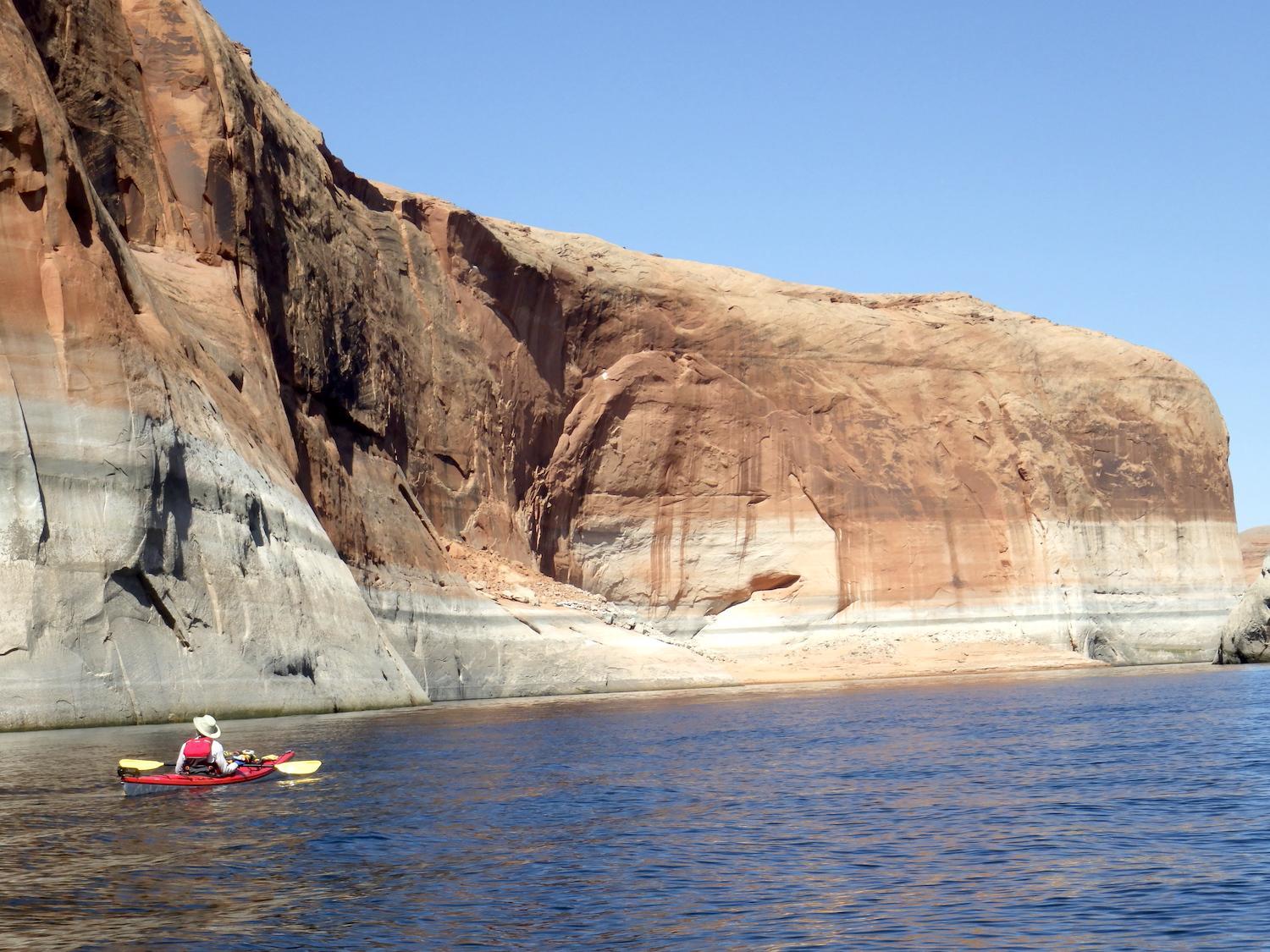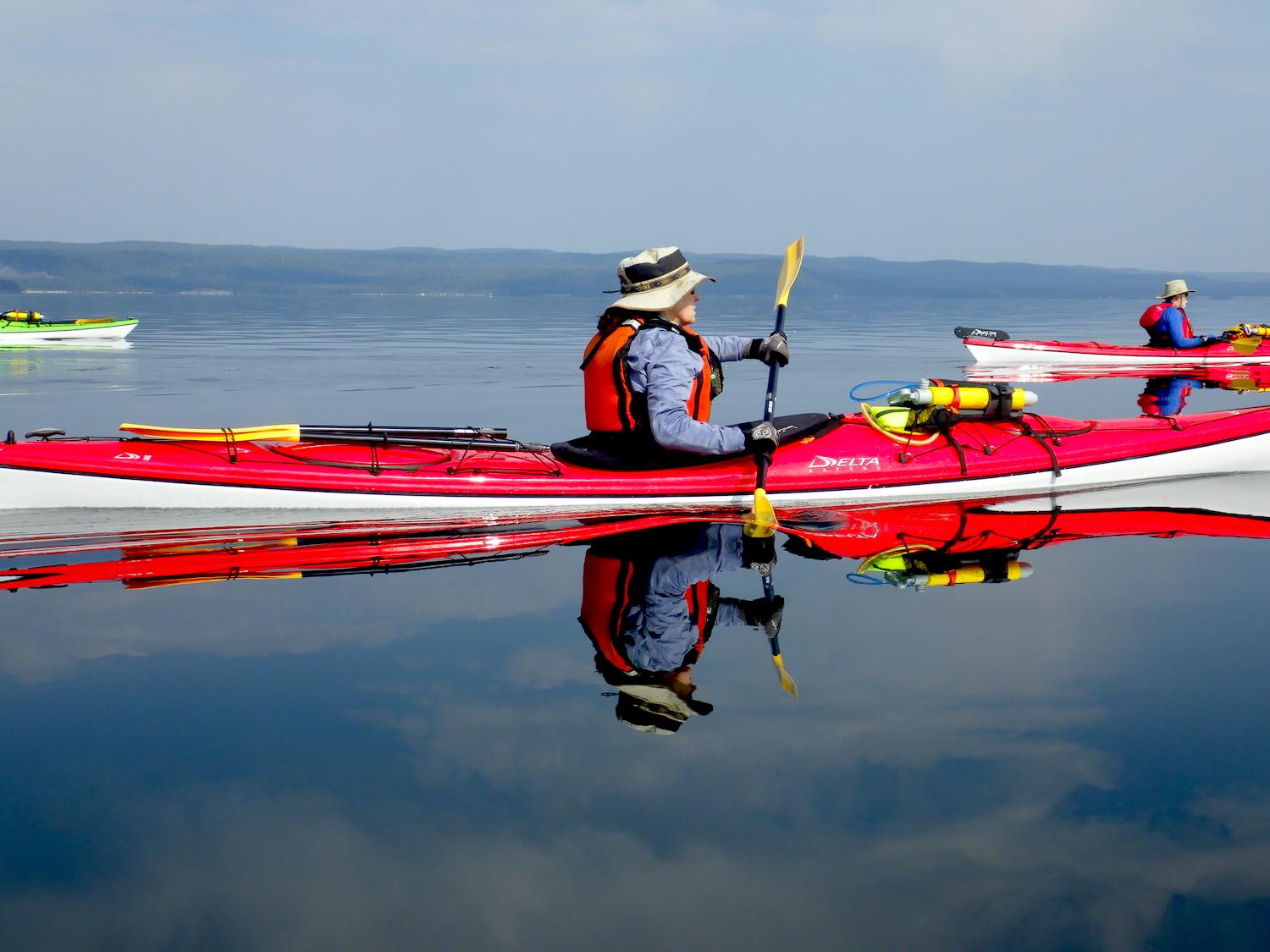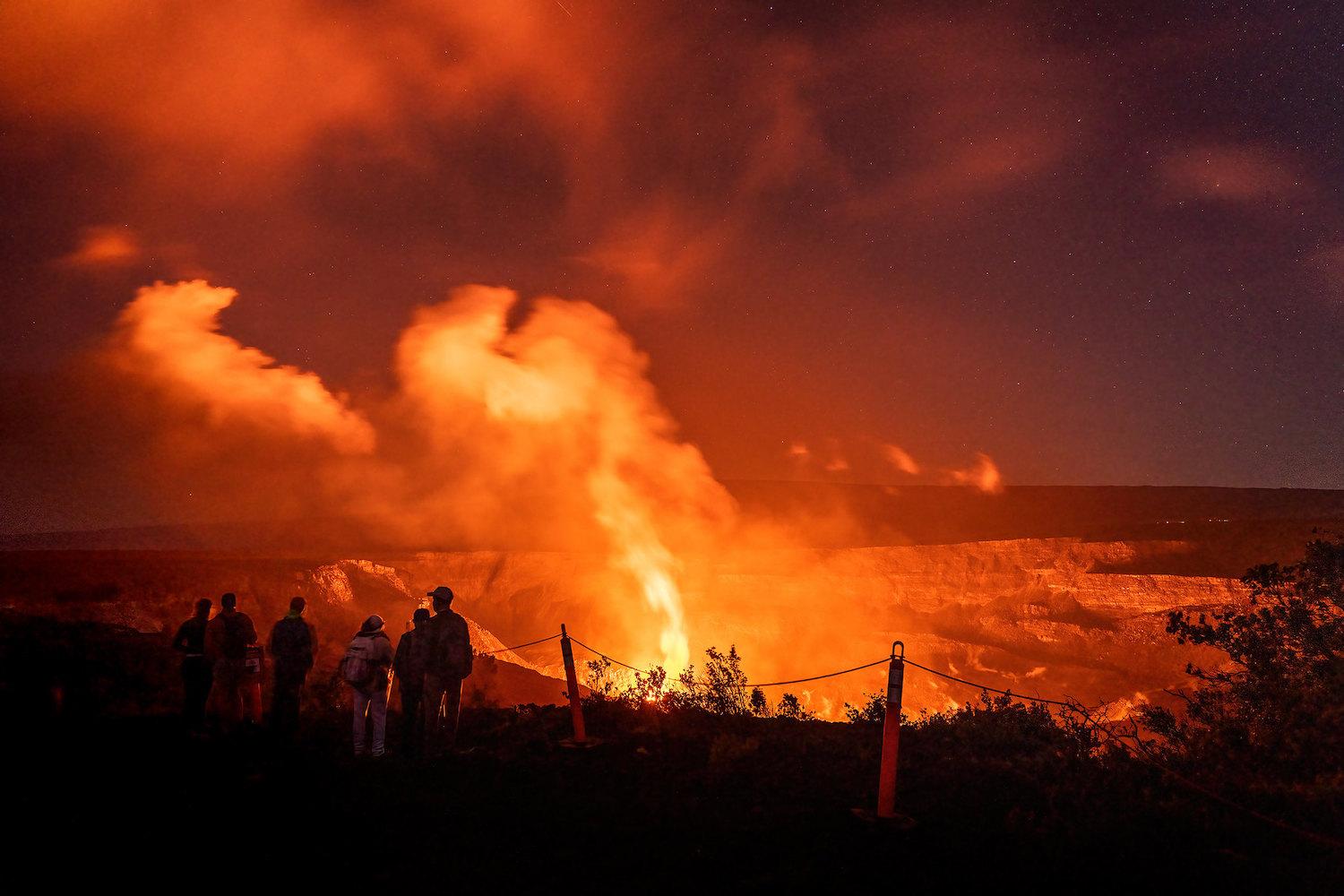A Year In The Parks: From Fort Laramie To Hawai'i Volcanoes
By Kurt Repanshek
Standing not far from the confluence of the North Platte and Laramie rivers, the landscape sprawling before me hasn't changed drastically over the past 170 years or so. The rivers still meander across the prairie before melding together just a bit east of Fort Laramie National Historic Site and continuing on as one to the Missouri.
The sweeping views from within the fort reach west, unimpeded, to the distant Laramie Range, and to the north and south with largely the same result: vastness. To the east, U.S. 26 runs through the town of Fort Laramie quicker than a cup of coffee before cutting on through the prairie into Nebraska.
It's hard to imagine, but Fort Laramie was a forerunner of today's truck stops. It attracted an incredible mix of cultures, voices, and purposes in this windy corner of what then was the Wyoming Territory. Trappers and Native Americans gathered here in the 19th century to swap furs and stories, emigrants came through on wagons destined for what they hoped would be a better life, and merchants were drawn here from the surrounding territories to profit from them all.
A cacophony of languages -- English, German, Spanish, Sioux, Cheyenne, and others -- carried through the air around the sutler's store, the parade grounds, and the wagon camps.
Months later, I stood more than 3,300 miles to the west, near the lip of the Halema‘uma‘u Crater at Hawai'i Volcanoes National Park, gazing at red fountains of molten rock being spit into the air by the simmering Kīlauea volcano. Had the pyrotechnics not been confined deep within the crater it might have appeared as an end-of-days scenario.
Off in the distance massive Mauna Loa, an even larger shield volcano that hadn't erupted since 1984, reinforced the point that the Hawaiian islands are volcanic in nature and continue to grow. Kīlauea was visibly erupting proof of that, though the eruptions late this year were not as vigorous, destructive, or island-expanding as those of 2018 were.
Like Fort Laramie, there's much culture to understand and appreciate at Hawai'i Volcanoes, from the legends of Pele-'ai-honua and her sister, Nā-maka-o-Kaha'i, to the lives and struggles of the early Hawaiians who made their lives from the land and sea.
Those two parks bookended a year of cautious travel as the Covid pandemic continued to morph. In between was a visit to the Colorado River that flowed out of Glen Canyon National Recreation Area and into Grand Canyon National Park and sea kayaking trips to Lake Powell in Glen Canyon and Yellowstone Lake in Yellowstone National Park.
All those trips, both for work and pleasure, reinforced to me the incredible breath, depth, and value of the National Park System.
There is no doubt that the park system has issues that must be tackled, from crowds and air-tour noise to cracked concrete, eroding trails, and not enough interpretive rangers to explain the wonders. But take the time to explore these places -- truly explore, not simply count coup with a selfie -- and it's hard not to come away in awe.
One Traveler's Year In The Parks

Fort Laramie was a sprawling post in 1870. The Laramie River cuts between the wooden and stone buildings in the background and the tents in the foreground/NPS Archives
Fort Laramie, An Overlooked Trove Of American History
When the U.S. Army in 1849 bought a fur trading post near the confluence of the Laramie and North Platte rivers on the windswept plains of the Wyoming Territory, it wasn't exactly a turnkey operation.
"My glowing fancy vanished before the wretched reality, a miserable, cracked, dilapidated enclosure. . . some of it propped with beams of timber which an enemy had only to kick away and down would come the whole structure," William Kelly, an emigrant heading west for the Oregon Territory, noted in his diary.
By the mid-1850s, things were not much better. In his book, Fort Laramie, Military Bastion of the High Plains, the late Douglas C. McChristian described Fort Laramie as “a bizarre combination of architecture, including a walled fort with bastions, a southern plantation-style house, southwest adobes…simple frame cottages, and stone buildings.”
Among those structures was "Old Bedlam," a two-story building built in 1849 that initially housed young officers and later saw the fort commander and his wife live on the second floor. Today it claims fame as Wyoming's oldest documented building.

Lake Powell was nearly 140 feet below full pool when we explored it last spring/Kurt Repanshek
Will Lake Powell's Decline Bring The Colorado River Back To Life?
As each day of exploring Lake Powell by sea kayak passed, the question kept surfacing in my mind: was the lake dying, or were Glen Canyon and the Colorado River coming back to life?
The answer seemed obvious: long-drowned side canyons were slowly being revealed, thick bands of quagga mussel shells were glued to the bathtub-ring-stained cliffs that frame Lake Powell, and boat launches were falling out of use due to low water levels. Long smothered by the lake, the Colorado River was reappearing at the northern end of Glen Canyon where it meets Cataract Canyon in Canyonlands National Park. With the dropping lake levels, the river was regaining its channel, revealing rapids long lost to the lake.
Here at Lake Powell in Glen Canyon National Recreation Area, and downstream at Lake Mead in Lake Mead National Recreation Area, are perhaps the most potent signs of climate change in the National Park System. Both are at troublingly low levels. Indeed, Lake Mead has never been so low after filling behind the rise of Hoover Dam back in the 1930s, and Powell seems headed for the same troubling distinction. Both have suffered from the extended drought that has deprived the headwaters of the Colorado River of thick snowpacks that slowly release their water in spring.

The waning health of the Colorado River is impacting Grand Canyon National Park/Patrick Cone
Traveler Special Report: Grand Canyon's Struggling River
Standing in the morning sun on the right bank of the Colorado River at Lees Ferry, the gin-clear river jumps, leaps, and swirls through the rock gardens close to shore, belying its dwindling health. Most raft trips pushing off from the launch ramp just upstream pay me no concern, anxious to buck the rapids that make the Colorado River through Grand Canyon National Park renowned world-wide.
When the national park was established by Congress in 1919, there was no dam to slow the Colorado River as it poured out of the Rocky Mountains, sliced its way across the Colorado Plateau, and squeezed into a canyon with soaring ramparts of igneous, metamorphic, and sedimentary layers. Its ebb and flow were constrained only by the amount of snowmelt that came out of the high country each spring, and records show that the early 1900s, 1940s, and 1980s were particularly wet. But the past 60 years have brought development and climate change that have greatly changed the once-wild Colorado.

Calm Yellowstone Lake waters are a paddler's best friend/Kurt Repanshek
Essay | The Other Yellowstone
We turned our backs and paddled away from the Yellowstone most people know. Away from the steaming landscape of Old Faithful and Steamboat geysers, of Grand Prismatic Spring and Mammoth Hot Springs, and of the Lamar and Hayden valleys with their bison, and occasionally bear, jams. Left behind was the Yellowstone of conga lines of visitors navigating the Upper and Midway geyser basin boardwalks, the reservation-only dining rooms, the bus tours disgorging their occupants.
We left it all behind, launching our kayaks from the beach at Grant Village and heading into a Yellowstone that requires you to be self-sufficient but also allows you to revel in nature in the raw. No parking lots, no dining rooms, no hot showers or soft beds, no picturesque lodges.

Night-time viewing of Kīlauea's eruptions is a main draw at Hawai'i Volcanoes National Park/NPS, Janice Wei
Exploring the Parks | In Awe Of Pele's Force
Charles Wilkes stood on the lip of Kīlauea's summit crater after dark and was astonished by the scene playing out before his eyes.
"The streams were of a glowing cherry-red color, illuminating the whole crater around," Wilkes said of the lava squeezing through cracks in the crater's surface. "The large lake beyond seemed swelling and becoming more vivid, so that we expected very moment to see an overflow from it of greater grandeur. ... The sight was magnificent, and worth a voyage round the world to witness."
Wilkes was on a voyage around the world when he anchored the ships of his U.S. Exploring Expedition at Hilo, Hawaii, in December 1840. His voyage of discovery for the young United States that ran from 1838 to 1842 provided him and his scientists ample time to explore the Hawaiian islands and the two volcanoes on the Big Island - Kīlauea and Mauna Loa. The amazement they had gazing into Kīlauea, which Wilkes described as a "mighty laboratory of nature," has been shared countless times by the multitudes that have gazed into the crater to catch its pyrotechnical eruptions since Wilkes watched the show 181 years ago.
Indeed, it has become a nightly pilgrimage for today's visitors to Hawai'i Volcanoes National Park, including myself; not to lay offerings for Pele of Hawaiian mythology at the rim of the Halemaʻumaʻu Crater, but rather to capture her glowing essence and carry it away in photographs and memories.
These visits did leave me in awe, but also with some concern for the park system's future. The pandemic has brought crowds to many parks, crowds that have left impacts on the natural resources and strains on park staff. Climate change swirls about the system, bringing torrential rains, sea-level rise, and blazing heat and drought, while hastening the retreat of some glaciers and igniting kindling-dry forests. Invasive species are running rampant across some parks.
Against that change and those crowds, the National Park Service is understaffed. Gateway town sprawl also is an issue, and rockets heading for Space could soon be another for at least one unit of the park system.
How does all that affect the visitor experience, the ability to connect with the fabric -- natural, cultural, historic -- of the parks? Head into the backcountry as I was able to and it's like going back in time, but not everyone can, or wants to, do that.
There is obviously a need for more space to recreate, but simply adding units to the park system won't necessarily address the impact issues at Yellowstone, Yosemite, Arches, Grand Canyon, Crater Lake, Acadia, and other parks that have been tested by the crowds and which will remain highly popular regardless of how many units are created.
Reservations can help ameliorate some of the issues, but they also can impede spontaniety of travel, and the current state of recreation.gov has raised more than a few questions about its equitableness.
Change will continue to be a constant across the National Park System. How we approach it will go far in protecting the system not just for future generations, but for today's visitors.
My years left for exploring the park system are growing few, which surely adds to my concern. And that concern is amplified by recent events in the parks. The late Michael Frome, a dean of conservation writing who long lamented the over-development of parks, seemed to be onto a solution in his last book, Rediscovering National Parks in the Spirit of John Muir:
Crowds, congestion, noise, intrusions of human-made structures, and pollution of air and water all interfere with the appreciation, understanding, and enjoyment of the natural scene. To be fully enjoyed, parks must first be fully preserved.
A slower pace expands the dimensions of time. It enables us to recognize the limitations of a fragile earth, to pledge allegiance to a green and peaceful planet, and to believe that if others do likewise and we believe strongly, we will make it happen.

 Support Essential Coverage of Essential Places
Support Essential Coverage of Essential Places
Add comment